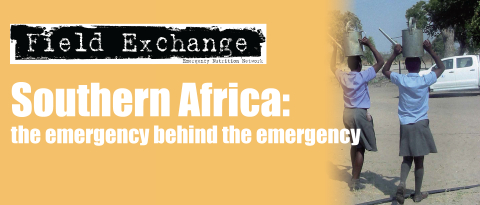Responding to early warnings
Summary of published research1

Desert locust
An article on the failure of early warning systems (EWS) to elicit response cites recent experiences in Niger and southern Africa as cases in point. On 20th of October 2003, the Food and Agriculture Organisation (FAO) warned that desert locusts would cause damage in Niger and appealed for help. However, funds were not forthcoming until the plague was well underway and the FAO were still short of US $17 million of their needs in May 2004. The locust invasion, the biggest in 15 years, combined with an early end to the rainy season, caused poor harvests - worse than the annual hungry season and led directly to the famine that began in January 2005.
While FAO forecasts desert locust outbreaks, there are few EWSs for other pests. The UK Department for International Development (DFID) has sponsored three early warning systems across the Southern African Development Community (SADC) region:
- The Information Core for Southern African Migrant Pests is an internet-based system that provides information and early warning of several pests.
- Forecasting models for red-billed quelea birds (cereal crop pests) use satellitederived rainfall estimates to show where conditions have become suitable for the birds to breed.
- Community-based forecasting for African armyworm (a cereal crop pest) relies on vil lagers counting moths from pheromone traps, collecting local rainfall data and running the information through simple rules to provide localised forecasts of moth out breaks.
In contrast to Niger, policymakers in Southern Africa do act against migrant pests and heed warnings, saving large quantities of crops. Estimates from Southern Africa suggest that current quelea control programmes save at least 100 million rand's worth of wheat crops each season.
The article suggests that there are several possible reasons as to why policymakers, donors and national governments seldom take serious notice of early warning systems:

Sorghum damaged by quelea
- They have a 'seeing is believing' mentality and refuse to provide funds until they can see the problem. Political gains come by visibly helping in emergencies, but less so from prevention strategies where lives saved or economic gains are not immediately obvious.
- They have little or no scientific training and do not understand prevention strategies. There is a lack of scientists in key policymaking roles and, in the UK at least, in positions able to provide advice.
The new UN Central Emergency Response Fund promises to have funds available to facilitate fast delivery of coordinated donor aid to crisis areas. Time will tell as to what difference this makes.
See further information at the following links:
FAO Desert Locust alert, www.fao.org/ag/locusts/common/ecg/241_en_24019_en.htm
The SADC Quelea breeding forecast for Southern Africa, www-web.gre.ac.uk/directory/NRI/quel
Information Core for Southern African Migrant Pests, http://icosamp.ecoport.org
1Cheke. R (2006).Responding to early warnings. Id21 insights #61, April 2006, pp 8
Imported from FEX website


